 W
WA working dog is a dog used to perform practical tasks, as opposed to pet or companion dogs.
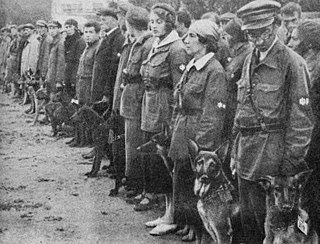 W
WAnti-tank dogs were dogs taught to carry explosives to tanks, armored vehicles and other military targets. They were intensively trained by the Soviet and Russian military forces between 1930 and 1996, and used in 1941–1942, against German tanks in World War II. Initially dogs were trained to leave a timer-detonated bomb and retreat, but this routine was replaced by an impact-detonation procedure which killed the dog in the process. The U.S. military started training anti-tank dogs in 1943 in the same way the Russians used them, but this training exposed several problems and the program was discontinued.
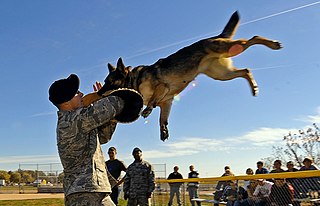 W
WAn attack dog or personal protection dog is any dog trained by a human to defend or attack persons, a territory, or property either on command, on sight, or by inferred provocation. Attack dogs have been used often throughout history and are now employed in security, police, and military roles.
 W
WA bay dog is a dog that is specially trained to find, chase, and then bay, or howl at from a safe distance from large animals during a hunt, such as during a wild boar hunt.
 W
WBeagle Brigade is a team of beagles and their human handlers who, as part of the United States Department of Agriculture's Animal and Plant Health Inspection Service (APHIS), inspect luggage at U.S. airports searching for agricultural products. According to the USDA, the Beagle Brigade program averages around 75,000 seizures of prohibited agricultural products a year.
 W
WCanine cancer detection is an approach to cancer screening that relies upon the claimed olfactory ability of dogs to detect, in urine or in breath, very low concentrations of the alkanes and aromatic compounds generated by malignant tumors.
 W
WIn the United States, a courthouse facility dog is a professionally trained facility dog that has graduated from an accredited assistance dog organization that is a member of Assistance Dogs International. Such dogs assist crime victims, witnesses and others during the investigation and prosecution of crimes, as well as during other legal proceedings. Courthouse facility dogs also provide assistance to Drug Court and Mental Health Court participants during their recovery from drugs, alcohol, mental illness and posttraumatic stress disorder.
 W
WA detection dog or sniffer dog is a dog that is trained to use its senses to detect substances such as explosives, illegal drugs, wildlife scat, currency, blood, and contraband electronics such as illicit mobile phones. The sense most used by detection dogs is smell. The smell from the detection dogs are more enhanced than the average dog. They are trained to have this great sense of smell. Hunting dogs that search for game, and search dogs that work to find missing humans are generally not considered detection dogs. There is some overlap, as in the case of cadaver dogs, trained to search for human remains. A police dog is essentially a detection dog that is used as a resource for police in specific scenarios such as conducting drug raids, finding missing criminals, and locating stashed currency.
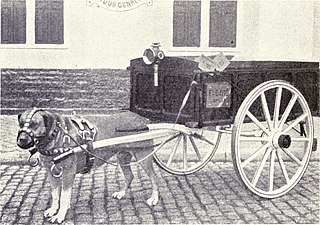 W
WA drafting dog, pulling dog, or draft dog is a dog bred and traditionally used for pulling a dogcart, or in winter also for sled pulling. Dogs bred for this work have strong builds. All drafting dogs have the qualities that are needed, strength and determination. Many draft dogs are in the Molosser breed group which are dogs that are solidly-built and strong.
 W
WA guard dog or watchdog is a dog used to guard property against, and watch for, unwanted or unexpected human or animal intruders.
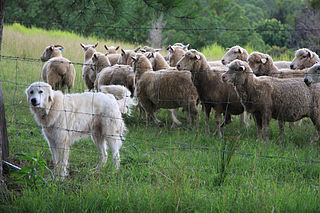 W
WA livestock guardian dog (LGD) is a dog type bred for the purpose of protecting livestock from predators.
 W
WThe Oketz Unit, is the independent canine special forces (sayeret) unit of the Israel Defense Forces.
 W
WA police dog is a dog that is specifically trained to assist police and other law-enforcement personnel. Their duties include: searching for drugs and explosives, locating missing people, finding crime scene evidence, and attacking people targeted by the police. Police dogs must remember several verbal cues and hand gestures. The most commonly used breeds are the German Shepherd, Belgian Malinois, Bloodhound, Dutch Shepherd, and the retriever breeds. Recently, the Belgian Malinois has become the dog of choice for police and military work due to their intense drive and focus. Malinois are smaller and more agile than German Shepherd Dogs, and have fewer health issues. However, a well-bred working line German Shepherd Dog is just as successful and robust as a Malinois.
 W
WSearch and rescue dogs are valuable after natural disasters, mass-casualty incidents, and for locating missing people. Dedicated handlers and well-trained dogs are required. Search and rescue dogs are typically worked by a small team on foot.
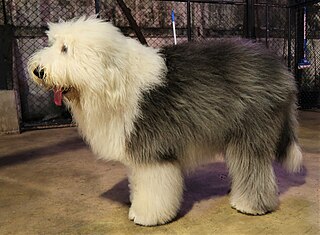 W
WA sheep dog or sheepdog is generally a dog or breed of dogs historically used in connection with the raising of sheep. These may include livestock guardian used to guard sheep and other livestock in farms for farmers or herding dogs used to herd sheep and other livestock.
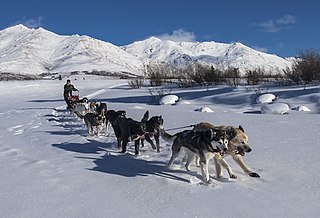 W
WSled dogs have been used in the Arctic for at least 9,000 years and were important for transportation in Arctic areas until the introduction of semi-trailer trucks, snowmobiles and airplanes in the 20th century, hauling supplies in areas that were inaccessible by other methods. They were used with varying success in the explorations of both poles, as well as during the Alaskan gold rush. Sled dog teams delivered mail to rural communities in Alaska, Yukon, Northwest Territories and Nunavut. Sled dogs today are still used by some rural communities, especially in areas of Alaska and Canada as well much of Greenland. They are used for recreational purposes and racing events, such as the Iditarod Trail and the Yukon Quest.
 W
WA therapy dog is a dog that is trained to provide affection, comfort and support to people, often in settings such as hospitals, retirement homes, nursing homes, schools, libraries, hospices, or disaster areas. In contrast to assistance dogs, which are trained to assist specific patients with their day-to-day physical needs, therapy dogs are trained to interact with all kinds of people, not just their handlers.
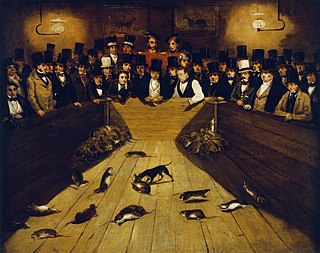 W
WTiny the Wonder was an English Toy Terrier famous in the City of London in the mid-19th century for being able to kill 200 rats in an hour in the city's rat-baiting pits. At the time, the world record for killing 100 rats was 5 minutes, 30 seconds, held by a bull and terrier named Billy.
 W
WThe Turnspit dog was a short-legged, long-bodied dog bred to run on a wheel, called a turnspit or dog wheel, to turn meat. The type is now extinct. It is mentioned in Of English Dogs in 1576 under the name "Turnespete". William Bingley's Memoirs of British Quadrupeds (1809) also talks of a dog employed to help chefs and cooks. It is also known as the Kitchen Dog, the Cooking Dog, the Underdog and the Vernepator. In Linnaeus's 18th-century classification of dogs it is listed as Canis vertigus. The breed was lost, since it was considered to be such a lowly and common dog that no record was effectively kept of it. Some sources consider the Turnspit dog a kind of Glen of Imaal Terrier, while others make it a relative of the Welsh Corgi.